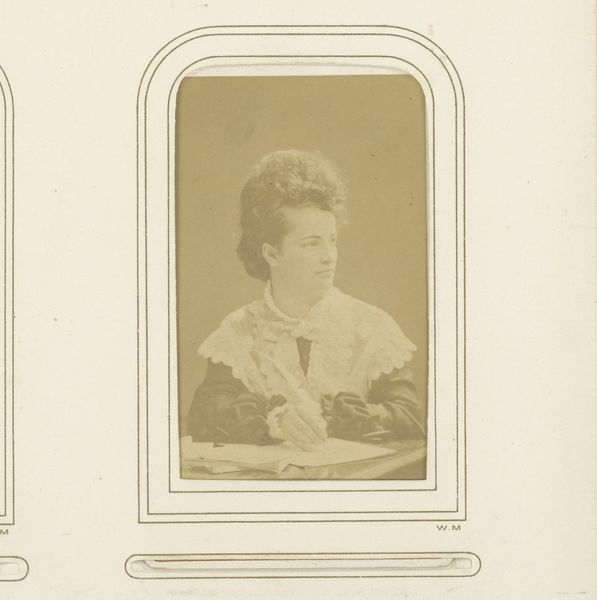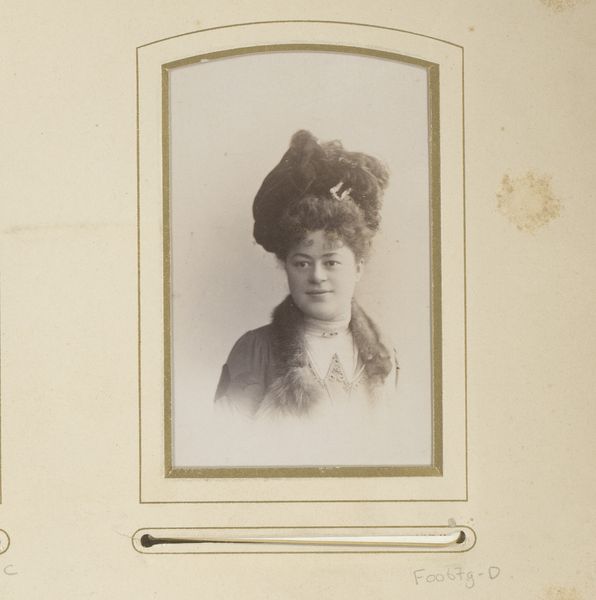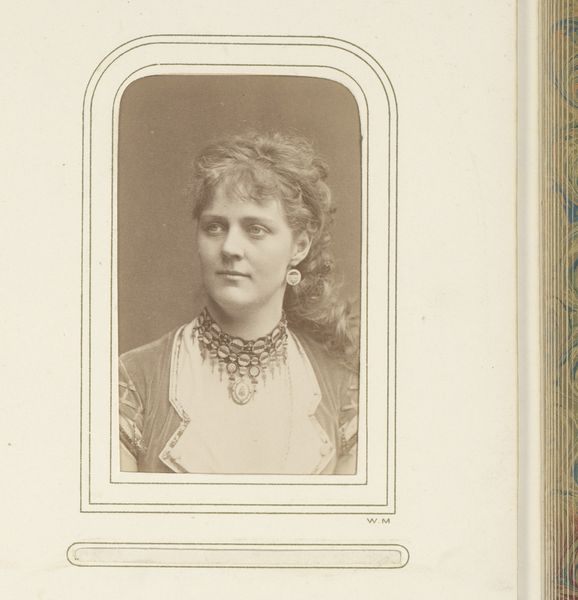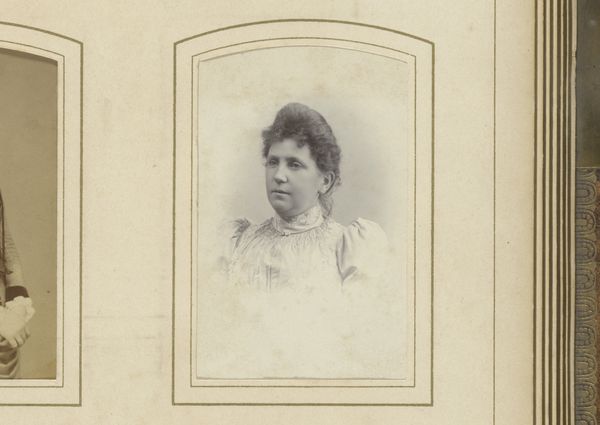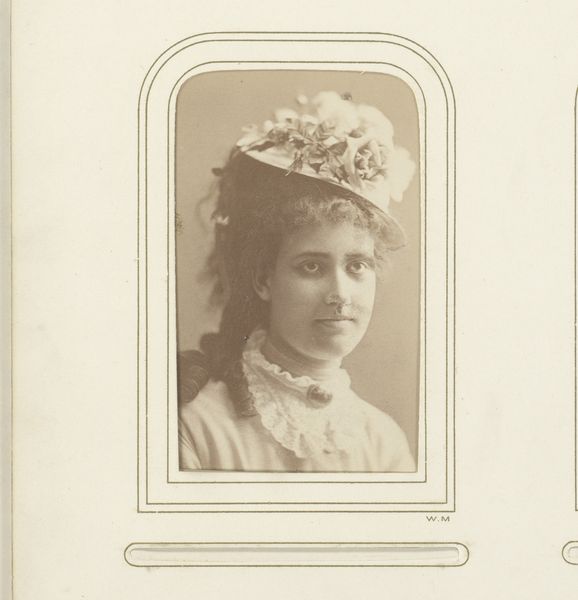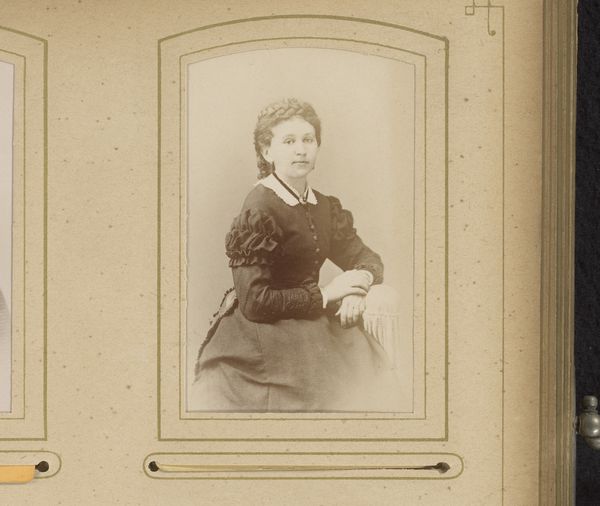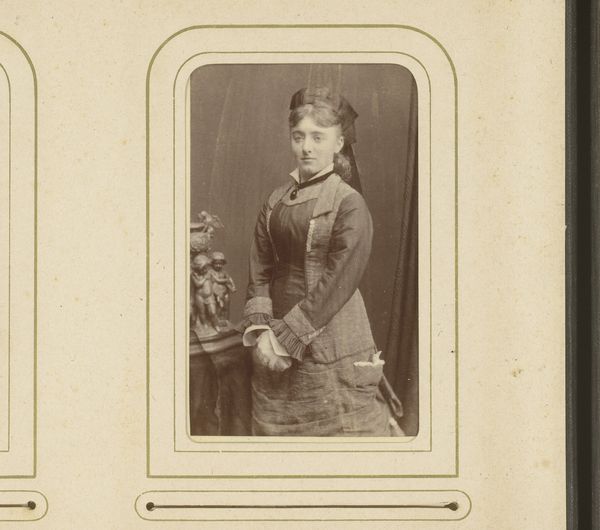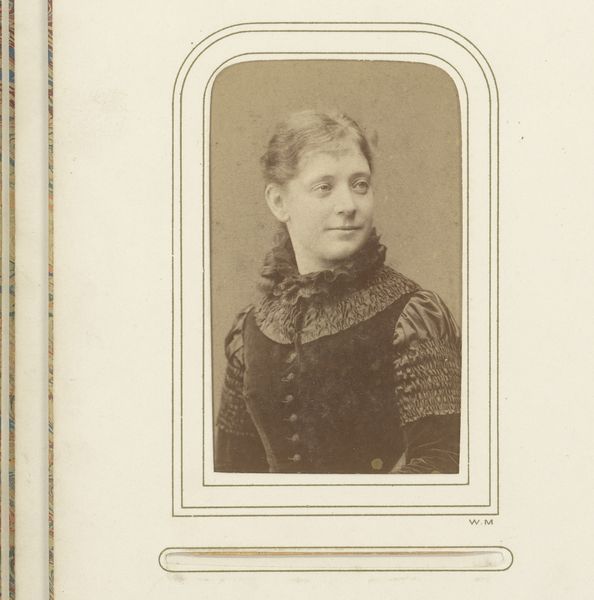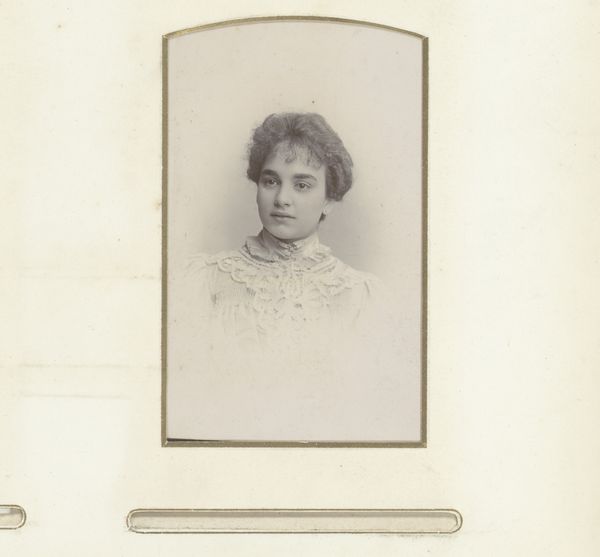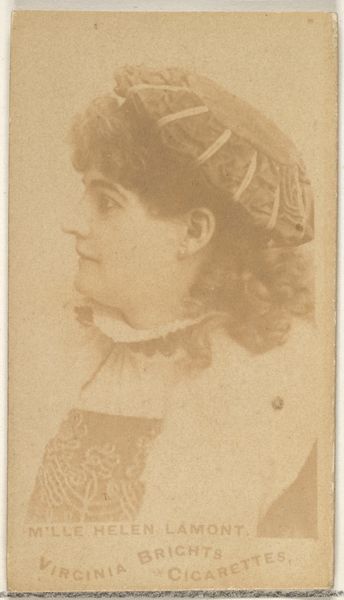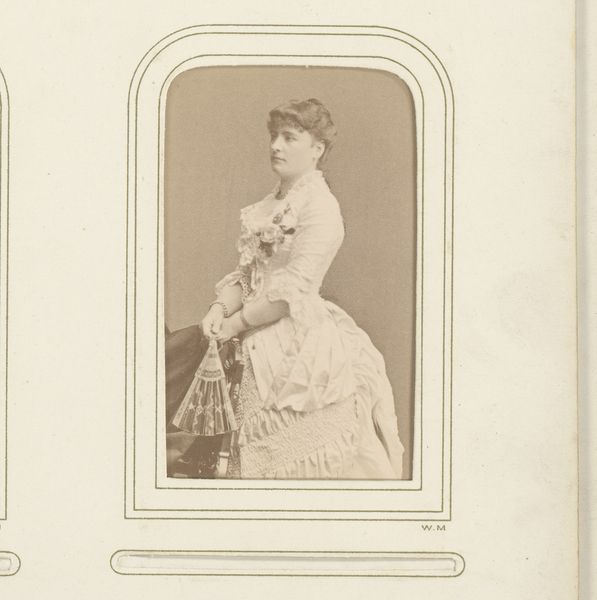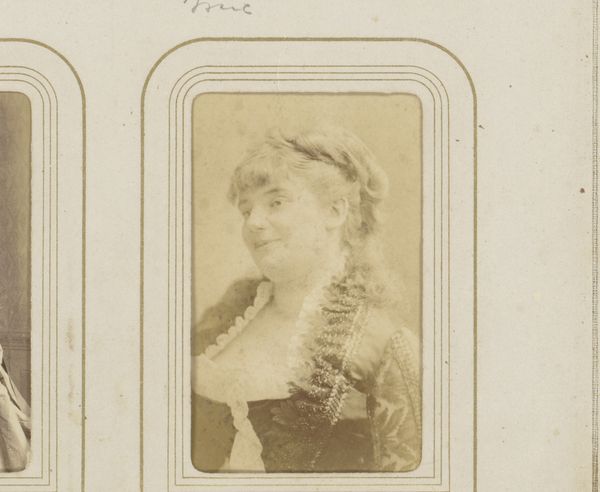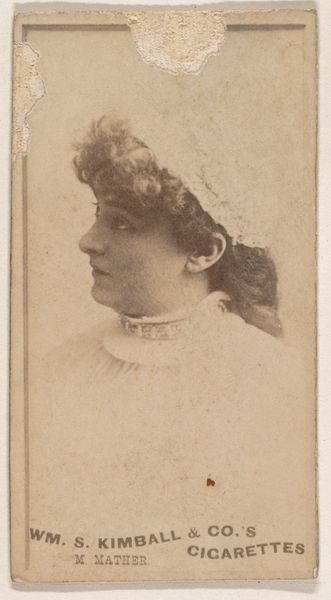
photography, gelatin-silver-print
#
portrait
#
photography
#
gelatin-silver-print
Dimensions: height 85 mm, width 51 mm
Copyright: Rijks Museum: Open Domain
Curator: The subject of this gelatin-silver print, taken sometime between 1880 and 1890, is Ellen Hartman. The piece is simply titled, “Portret van Ellen Hartman.” Editor: It strikes me as both intimate and restrained. The sepia tones give it a nostalgic feel, of course, but her averted gaze and somewhat rigid posture suggest a studied self-presentation, very aware of the photographer's eye. Curator: Exactly. Early portrait photography was deeply tied to notions of respectability and self-fashioning, particularly for women. Ellen Hartman’s attire—the elaborate fur hat, the delicate lace collar and necklace—speaks volumes about her social standing. We need to consider the performance aspect involved. How much agency did she have in crafting this image of herself? What narratives was she consciously engaging with? Editor: From a formal perspective, observe how the oval frame isolates her. The shallow depth of field emphasizes the intricate textures of her clothing against the relatively soft backdrop, creating a focal point around her face. There is tension created in her directed gaze out of the shot. This focus also creates an aesthetic harmony with the curvilinear pattern of her lace collar. It’s an almost classical study in composition. Curator: But is that composition simply "aesthetic," or is it laden with the social and political meanings of its time? Consider the limitations placed on women's representation. Did photography offer new possibilities for agency, or simply replicate existing power structures? Think of Sojourner Truth deliberately using photography to fund her activism by selling cartes-de-visite of herself that were designed to further the antislavery movement and showcase Black pride. I would not say that is simply aesthetic. Editor: Point taken. Though, seeing the balance and the lines does amplify the visual impact, regardless of its context. Curator: Precisely, and by layering both of our approaches—considering form alongside social context—we create a fuller picture of the piece. Editor: Yes, a conversation about visual language that remains aware of how identities shape its composition.
Comments
No comments
Be the first to comment and join the conversation on the ultimate creative platform.
